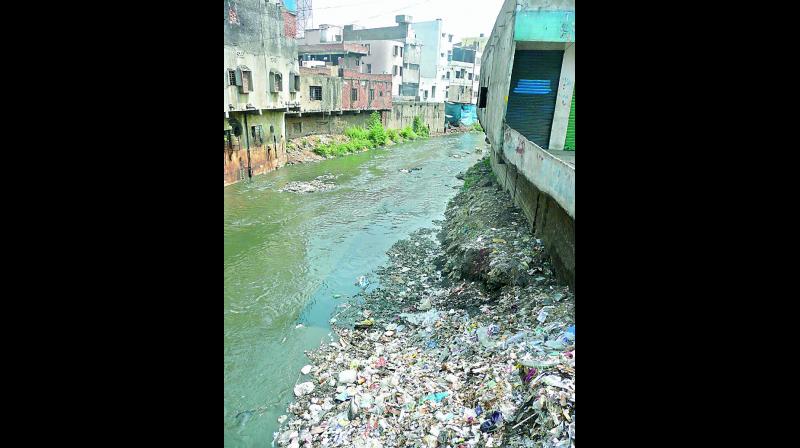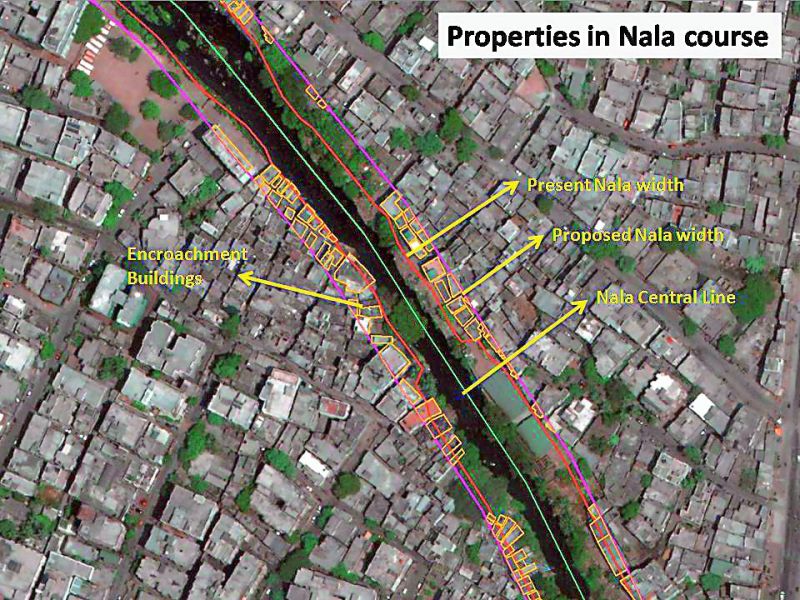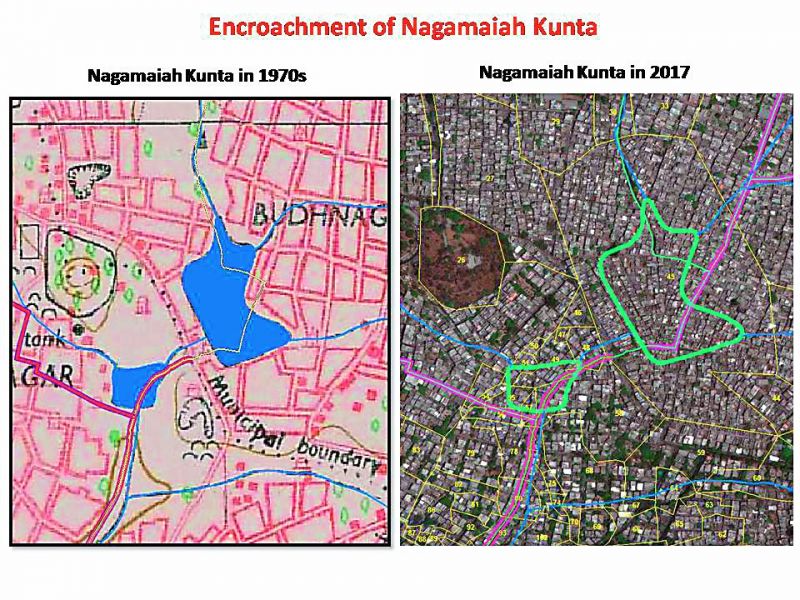Hyderabad: Buildings eat into nala space

Hyderabad: Every year illegal constructions come up on the nalas. In the absence of land records and coordination between the GHMC and Hyderabad Metropolitan Development Authority (HMDA), the illegal constructions are, after some time, regularised by the GHMC, which fills its coffers with the penalty money paid, though the problem remains.
 Around Rs 15,000 crore is needed to widen these nalas (assuming that the buildings will be demolished) and the cost could escalate with time.
Around Rs 15,000 crore is needed to widen these nalas (assuming that the buildings will be demolished) and the cost could escalate with time.
The recent water-logging in the city has raised questions about the cause, but the Kirloskar Committee report, submitted a decade ago, had clearly recommended that stormwater drains or nalas had to be widened for the free flow of rain water in GHMC limits. However, this will be a challenging task for the state government and the GHMC- if they decide to ever undertake it - because thousands of illegal structures have been allowed to come up on these nalahs and tanks.
 Encroachment of Nagamaiah Kunta
Encroachment of Nagamaiah Kunta
There are 173 nalas in the Greater Hyderabad Municipal Corporation limits and almost all of them are encroached upon fully or partially by thousands of illegal buildings. The GHMC has ‘regularised’ most of these buildings, that is, it has made the illegal, legal by imposing a fine. Around Rs 15,000 crore is needed to widen these nalas (assuming that the buildings will be demolished) and the cost could escalate with time.
Demolishing thousands of illegal structures on nalas and paying compensation to regularised buildings is a mammoth task. Besides, of the 826 tanks in the corporation limits, 40 per cent have been encroached upon partially or fully. Every year illegal constructions come up on the nalas. In the absence of land records and coordination between the GHMC and Hyderabad Metropolitan Development Authority (HMDA), the illegal constructions are, after some time, regularised by the GHMC, which fills its coffers with the penalty money paid, though the problem remains. The Kirloskar Committee found around 13,500 illegal houses constructed on nalas. By 2016, that number had risen to 28,000, constructed over a 390 km stretch of nalas. Illegal constructions have also come up on tanks over a period of time, and many have simply disappeared as a consequence.
If the GHMC were to rectify the errors it committed in the past, it would have to demolish thousands of buildings and pay hefty compensation for those it regularised. When a demolition drive was carried out earlier, some of the owners of the illegal structures went to court and got stay orders. Municipal administration and urban development minister K.T. Rama Rao held a meeting with opposition parties recently to discuss widening of the nalas by demolishing the encroachments. The opposition parties said that instead of demolishing the constructions, it would be better to de-silt all the nalas.
The GHMC has identified 844 critical bottlenecks that obstruct the free flow of water in the stormwater drains. GHMC is planning to study the encroachments of all 173 nalas in its limits. It wants to entrust the Telangana State Remote Sensing Application Centre (TRAC) with a study of the encroachments on all 173 nalas but will have to pay the National Remote Sensing Agency (NRSA) Rs 2,500 per sq km for the job, and if it is done in 3D mode, the fee will increase to Rs 4,000 per sq km.
The recent water-logging in the city has raised questions about the cause, but the Kirloskar Committee report, submitted a decade ago, had clearly recommended that stormwater drains or nalas had to be widened for the free flow of rain water in GHMC limits. However, this will be a challenging task for the state government and the GHMC- if they decide to ever undertake it - because thousands of illegal structures have been allowed to come up on these nalahs and tanks.
There are 173 nalas in the Greater Hyderabad Municipal Corporation limits and almost all of them are encroached upon fully or partially by thousands of illegal buildings. The GHMC has ‘regularised’ most of these buildings, that is, it has made the illegal, legal by imposing a fine. Around Rs 15,000 crore is needed to widen these nalas (assuming that the buildings will be demolished) and the cost could escalate with time.
Demolishing thousands of illegal structures on nalas and paying compensation to regularised buildings is a mammoth task. Besides, of the 826 tanks in the corporation limits, 40 per cent have been encroached upon partially or fully. Every year illegal constructions come up on the nalas. In the absence of land records and coordination between the GHMC and Hyderabad Metropolitan Development Authority (HMDA), the illegal constructions are, after some time, regularised by the GHMC, which fills its coffers with the penalty money paid, though the problem remains.
The Kirloskar Committee found around 13,500 illegal houses constructed on nalas. By 2016, that number had risen to 28,000, constructed over a 390 km stretch of nalas. Illegal constructions have also come up on tanks over a period of time, and many have simply disappeared as a consequence. If the GHMC were to rectify the errors it committed in the past, it would have to demolish thousands of buildings and pay hefty compensation for those it regularised.
When a demolition drive was carried out earlier, some of the owners of the illegal structures went to court and got stay orders. Municipal administration and urban development minister K.T. Rama Rao held a meeting with opposition parties recently to discuss widening of the nalas by demolishing the encroachments. The opposition parties said that instead of demolishing the constructions, it would be better to de-silt all the nalas. The GHMC has identified 844 critical bottlenecks that obstruct the free flow of water in the stormwater drains. GHMC is planning to study the encroachments of all 173 nalas in its limits. It wants to entrust the Telangana State Remote Sensing Application Centre (TRAC) with a study of the encroachments on all 173 nalas but will have to pay the National Remote Sensing Agency (NRSA) Rs 2,500 per sq km for the job, and if it is done in 3D mode, the fee will increase to Rs 4,000 per sq km.

